IRISH actor Aidan Turner became a household name for his role in the Cornish set BBC drama Poldark.
While he is better known for his shirtless scything scenes, even winning an award for his efforts, he insists that his Irish horse Seamus is in fact the star of the show.
Seamus is just one of a a strong team of Irish horses whose names have been etched into the history books for Ireland, and The Irish Post has picked out a few more of the county's most iconic and successful mounts.
Check out our top six horses below:
SEAMUS – POLDARK (TV SERIES)
The Irish-born mount has gained a following of his own, with fans visiting his stables, according to Turner.
“He’s an Irish horse, so we get on great,” he told the Radio Times. “He’s a celebrity now and has a lot of people visiting his stables. Apparently they all rub his saddle for some reason. I have no idea why!”
It has been reported in the Metro that Seamus is so integral to the show that BBC bosses have got a stunt double.
“Just like Aidan Turner had a stunt double for some scenes, you don’t take risks with your principal horse,” said Mark Atkinson, boss of Atkinson’s Action Horses, the East Yorkshire firm that provided horses for the series.
“My son Ben worked as Aidan’s double on Poldark. So in some scenes it looks like Aidan riding Seamus, but it’s actually Ben Atkinson riding Jonny Wilkinson.”
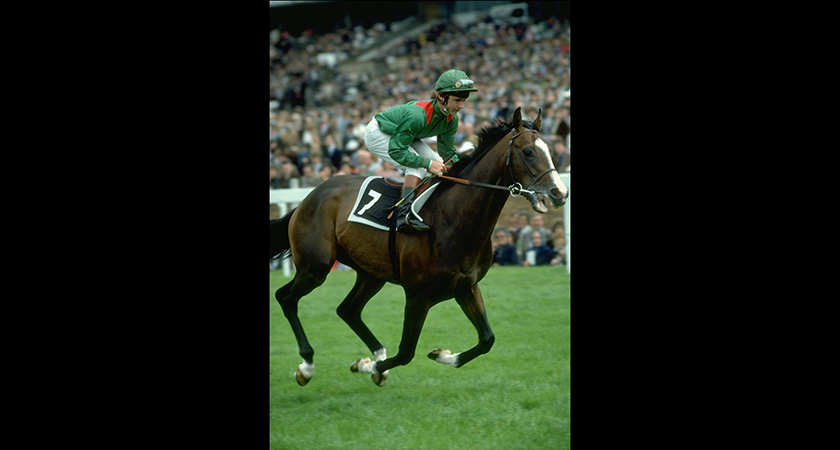 Walter Swinburn on Shergar during the King George VI and Queen Elizabeth Diamond Stakes at Ascot racecourse in 1981 (Photo: Getty Images)
Walter Swinburn on Shergar during the King George VI and Queen Elizabeth Diamond Stakes at Ascot racecourse in 1981 (Photo: Getty Images)SHERGAR – RACEHORSE
In February 1983, Shergar was the target of a crime that remains largely unresolved. At the height of the Troubles, Shergar, one of Ireland’s prominent champion horses reportedly worth over $15million, was kidnapped from his stable in Co. Kildare.
After failed attempts by the armed gang responsible to obtain money for the horse, he was killed.
At the time it was suspected that the IRA were behind the kidnapping, whose motive would have been to raise money for arms, but they have never officially claimed responsibility.
Shergar’s whereabouts remain a mystery.
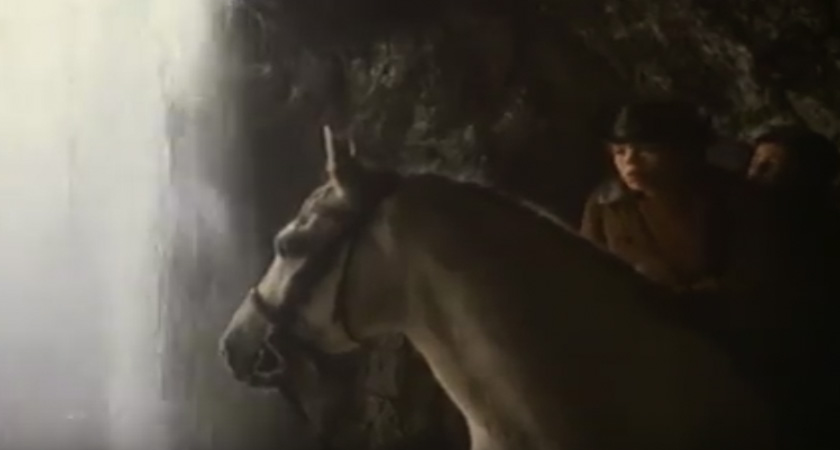 Tír na nÓg in the movie (Photo: YouTube)
Tír na nÓg in the movie (Photo: YouTube)TÍR NA NÓG – INTO THE WEST (FILM)
When a beautiful white horse called Tír na nÓg (‘Land of Eternal Youth’ in Irish) mysteriously appears to an Irish Traveller grandfather and his two grandsons in Dublin, the boys dream of becoming cowboys.
In this 1992 movie, the grandfather recounts Irish folk-tales and legends much to his grandchildren’s delight, but the horse is stolen from them and an adventure to retrieve the mystical horse ensues.
They escape the poverty of a north Dublin council estate, and ride ‘Into the West’ where they discover Tír na nÓg’s hidden secret.
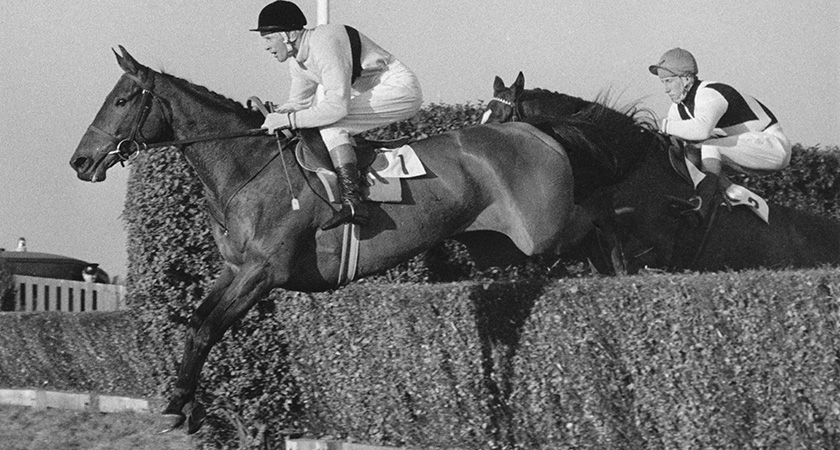 Jockey Pat Taaffe and Arkle lead D. Nicholson on Mill House at Sandown Park in 1965 (Photo: Getty Images)
Jockey Pat Taaffe and Arkle lead D. Nicholson on Mill House at Sandown Park in 1965 (Photo: Getty Images)ARKLE – RACEHORSE
Legendary Irish steeplechaser Arkle was one of jump racing’s finest horses.
Winner of the Cheltenham Gold Cup for three consecutive years, the 1957-born horse also won the King George VI Chase, the Irish Grand National and two Hennessy Gold Cups.
Among his accolades, Arkle was previously voted as the all-time favourite racehorse in Britain and Ireland by the Racing Post newspaper.
Trained by Tom Dreaper, and mainly ridden by jockey Pat Taafe, Arkle won 27 of his 35 races.
His final outing was when he suffered a career-ending injury in the 1966 King George VI Chase.
His skeleton is on view at the Irish Horse Racing Museum.
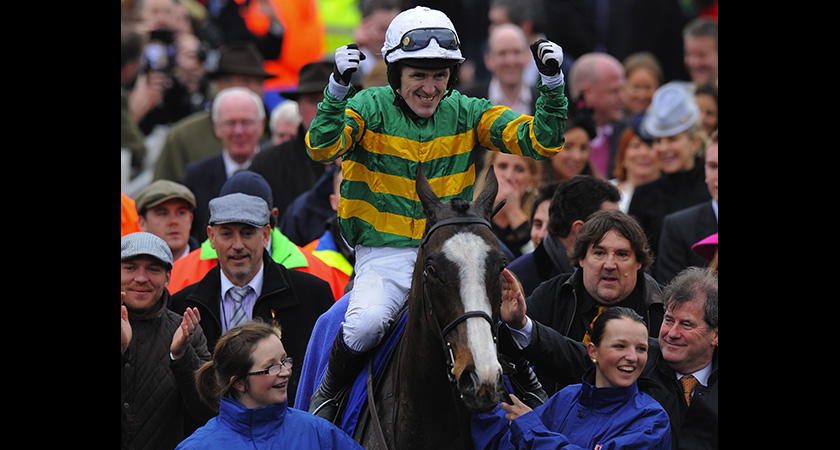 Jockey AP McCoy celebrates on Synchronised after winning the Cheltenham Gold Cup Chase in 2012 (Photo: Getty)
Jockey AP McCoy celebrates on Synchronised after winning the Cheltenham Gold Cup Chase in 2012 (Photo: Getty)SYNCHRONISED – RACEHORSE
Trained by Jonjo O’Neill, this Irish horse was named by AP McCoy as his favourite horse that he’s ridden.
McCoy won on Synchronised at the Welsh National in 2011, Lexus Chase in 2011 and Cheltenham Gold Cup in 2012.
He said that the horse was “number one” because of a personal connection he had to the animal.
"The mother of Synchronised, Mayasta, was my first winner for JP in 1996 and Synchronised gave me the greatest day in racing,” he said. “JP [McManus] spent his whole life trying to buy a Gold Cup horse, and his wife bred one for him.
"He was a bit like I am as a human being. He probably wasn't the greatest horse I'd ridden but he had the greatest will to win.
"As a jump jockey I've seen the human side of horse racing be really tough, but in equine terms what happened to Synchronised (suffered a fatal injury in the 2012 Grand National) was the worst day I've had in racing.
"When he fell I can distinctly remember him galloping off. I remember being in pain but thinking at least the horse is all right. Afterwards when he was loose he managed to get injured.
"I was very sore, but I cried for days afterwards. That affected me more than any other horse. It's personal and that's why he's number one."
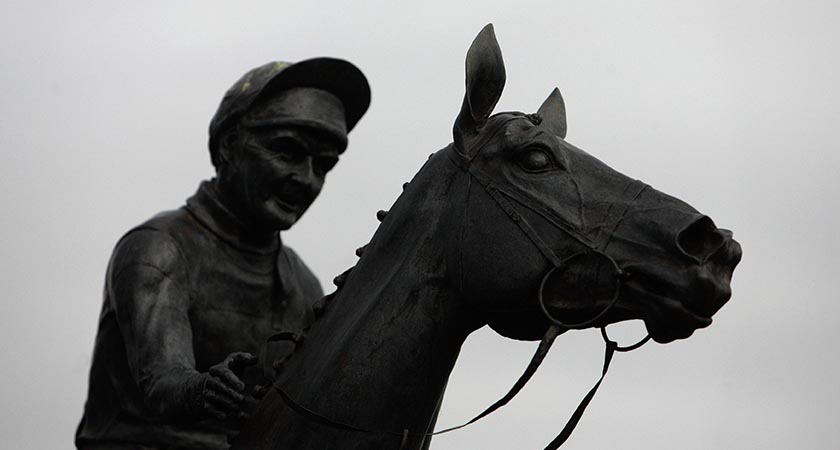 The statue of Dawn Run at the Cheltenham Race Course (Photo: INPHO/ Tom Honan)
The statue of Dawn Run at the Cheltenham Race Course (Photo: INPHO/ Tom Honan)DAWN RUN - RACEHORSE
As one of the greatest horses in the history of National Hunt Racing, Dawn Run was one of the big names at Cheltenham in the 1980s.
Trained by Paddy Mullins – father of trainer Willie Mullins – the horse had won the Irish, British and French Champion Hurdles in 1984.
The 1986 Gold Cup became one of the most memorable in the history of horse racing, with Dawn Run, Wayward Lad, Run and Skip and 1985 winner Forgive 'n Forget each taking the lead during the race.
But it was Jonjo O’Neill on board Dawn Run, who stole the show, coming from behind to claim victory and make the history books.
The win drew celebrations from the crowd, with fans and punters swarming the horse in the winners enclosure at Prestbury Park, which was an incredible scene at the time.
Tragedy struck soon after, when Dawn Run fell during a race in France at the age of eight, the news making the front page of the Irish Times.
Her statue stands at the parade ring at Cheltenham, opposite the statue of Arkle.

